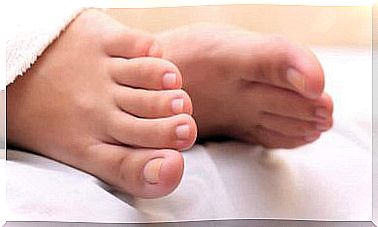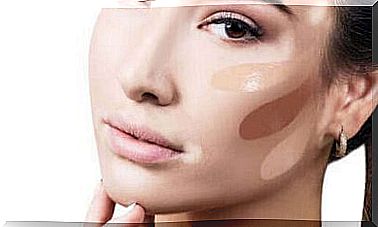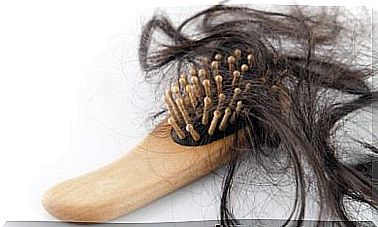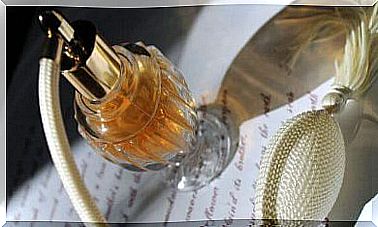Orthodontics In Children: Everything You Need To Know
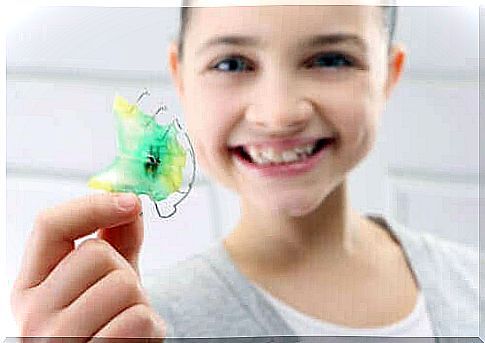
In childhood, abnormalities in bone development and tooth position often occur that can lead to bite problems. Orthodontics in children makes it possible to correct these disorders at an early age.
Orthodontics aims to control bone growth, correct the position of the jaws and teeth, or straighten the latter in a dental arch. The right ratio between the upper and lower teeth allows for normal oral functions.
When action is taken at an early age, problems can be treated as they arise, preventing them from progressing and worsening. The treatments are not only more effective, but also more pleasant, shorter and even cheaper.
Read below for more information on orthodontic care for children.
When do children need orthodontic care?
Children may need orthodontic treatment for many reasons. At this age, the advantage is that the bones are still developing and the teeth are just getting shaped.
This allows bite defects to be corrected with orthodontic appliances, as in the following cases:
- Tapered or narrow palate: The palate is narrower and has a domed area in the middle.
- Class II or retrognathy: The upper jaw is protruding forward relative to the lower jaw.
- Class III or prognatism: The lower jaw is protruding .
- Open bite : The upper and lower teeth do not touch each other when the mouth is closed.
- Crossbite: The lower teeth remain outside the upper teeth when the teeth are bitten together.
- Incorrect positions of teeth : Teeth are outside the arch of the tooth, narrow or oblique.
The dentist diagnoses the eruption after oral examination and further examinations. Some symptoms may be a sign to parents that the child needs orthodontic care:
- Premature departure of deciduous teeth.
- Harmful habits: sucking the thumb, chewing nails, using a feeding bottle or pacifier after the age of two, breathing orally, atypical swallowing.
- Difficulty pronouncing some phonemes.
- Narrow and disordered teeth, gaps between teeth, crooked teeth, or an unbalanced face.
- Pain, sounds or other problems when biting or eating.
It is important to monitor the eruption of teeth and the way the child bites, swallows and speaks to detect such abnormalities. This will allow you to report the matter as soon as possible to a dentist who can look for any problems.
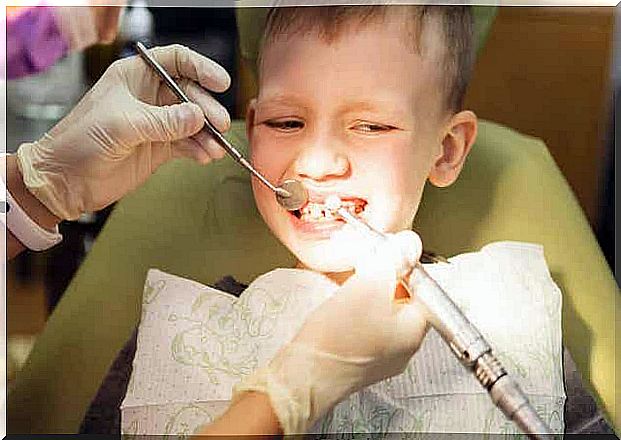
When should a child go to the dentist for the first time?
The child’s first dental visit should take place before the first birthday. Early and regular visits, every six months, make it possible to detect disturbances.
In addition to inspecting the mouth and monitoring the growth process of the child’s teeth and bones, the dentist will advise the parents on the care of the child’s oral hygiene. If the dentist detects any illness or disorder, he or she will begin appropriate treatment. In the case of a bite problem that cannot be resolved, the dentist will refer the child to orthodontist to a specialist dentist.
When the teeth start to change, between the ages of 6 and 7, it is best to see an orthodontist who can examine the child’s teeth, mouth and bite thoroughly.
In addition, X-rays, photographs, or mouth molds may be required. An orthodontist may ask about your child’s eating and speaking habits, other habits, and possible bite problems.
Taking a child to the dentist early does not mean that orthodontic treatment is needed immediately. Early diagnosis allows the professional to choose the best option and the ideal time to start orthodontic treatment.
Orthodontics in children allows teeth to be placed in a new position and growing bones to be shaped more easily than in adulthood. In addition, it prevents the progress of change and the whole situation from becoming more difficult.
Orthodontics in children: options
Orthodontics corrects the bite and the incorrect position of the teeth by causing constant pressure on certain areas of the bones or teeth. This causes the bone tissue to grow in a certain direction or the teeth to move to the right position.
There are various orthodontic treatment options for children to choose from. The choice of orthodontic device depends on the clinical case and the age of the patient.
Functional orthodontic appliances
Such orthodontic treatment is needed for temporary or mixed dentition, with both deciduous and iron teeth in the mouth. These are detachable orthodontic appliances designed to affect the position of the muscles that are responsible for moving the jawbone.
The strength and direction of the muscles can thus be controlled, which also means structural changes in the mouth over time. After all, muscles move teeth and even shape the bone that supports the teeth.
Proactive orthodontics
These are removable orthodontic treatments used during childhood while the bone is still developing. Such orthodontic treatment in children stops abnormal bone growth and properly directs the development of jaw and facial structures.
The person can put the removable orthodontic devices in their own mouth and take them out while eating and cleaning the mouth. The more instruments used, the better the results.
Such orthodontic appliances are usually made of plastic and have fasteners such as metal clamps. In this way, they apply mechanical force to structures that need to be shaped, either to control bone growth and expand the bone, or to move the teeth in a certain way.
This category also includes external oral orthodontic appliances (such as neck traction) that are helpful in treating, for example, class III malocclusion. The child uses them at night while sleeping.
Fixed orthodontic appliances
Here, metal fasteners, or brackets, are placed on the surface of the teeth, which are joined together by an arc wire. As the name implies, braces are attached to the teeth and cannot be removed by the patient.
This type of orthodontic treatment in children allows each tooth to be moved individually in any desired direction. Irons are put in the mouth at a young age when the teeth have completely changed to permanent ones, but the bone still grows.
Sometimes treatment needs to be supplemented with tooth extraction, especially if there is not enough space to rearrange the teeth. This approach is effective in problems such as diastema (the gap between teeth), narrow teeth, twisted teeth, and other misaligned teeth.
Although this type of orthodontic treatment in children is often thought of as classical irons and metal wires, in reality there are many variations so that irons do not bother the patient so much. There are even more aesthetic options that use ceramic fasteners, sapphire fasteners, and even irons placed on the inside of the teeth that are not visible.
The brackets come in different colors, so the child can change and combine them as they see fit.
Invisalign-type discreet orthodontic treatment in children
This orthodontic treatment uses transparent plastic films that the patient can put in and take out of their mouths themselves. The mechanism of action of these orthodontic instruments is similar to that of irons, but they may be more comfortable and easier to use.
The dentist makes special transparent plastic films for the mouth. These are replaced with new ones from time to time to allow the bite to continue to heal.
Plastic films should be removed from the mouth when eating and cleaning the instrument and mouth. However, they should be kept most of the day, for at least 22 hours, for treatment to be effective.
Orthodontics in children: treatment of braces and recommendations
Orthodontic treatment in children requires attention to be paid to certain aspects in order for the treatment to be successful and the mouth to remain generally healthy. Here are some steps parents should consider when using a corrective device.
Oral hygiene
It is important to pay special attention to the cleanliness of the mouth. Orthodontics promote the accumulation of bacterial plaque, increasing the risk of various problems such as cavities and gingivitis.
Teeth should be brushed daily, after each meal, thoroughly cleaning all tooth surfaces. This should be done with a soft bristle toothbrush and fluoride toothpaste. In addition, the child should use dental floss once a day and mouthwashes as recommended by the dentist.
Patients using removable orthodontists should remove them during cleaning and brush their teeth as usual. Transparent plastic films should be cleaned once a week with disinfectant effervescent tablets.
Cleaning is more difficult with braces, but even in this case it should be done carefully and correctly. Specially made brushes, either interdental brushes or specially made brush parts for an electric toothbrush, can be a great help in this task to clean all areas well. Mouthwashers are also very useful.
The importance of diet
Removable orthodontic appliances are removed during eating and the child eats as normal. Instead, children using braces should be careful with certain foods.
The child should avoid very hard or sticky foods that can break or detach the orthodontic appliance. A few examples of these are candies, nuts, chocolates, apples, and very tough foods.
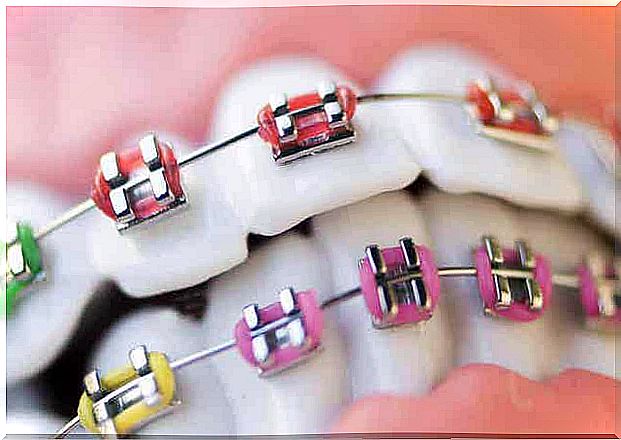
Discomfort management
Starting an orthodontic treatment can be very uncomfortable for a child. There is not only a foreign object in the mouth that the child needs to get used to, but also the force it generates can cause pain.
Usually these feelings are temporary and the child gets used to them over time. In any case, your dentist may prescribe medication for these critical moments.
The use of fluoride toothpaste is important to prevent tooth tenderness. Oral mucosal damage due to abrasion or injury caused by an orthodontic appliance is also common. They usually disappear on their own, but can be prevented by putting orthodontic wax in sharp places.
Attending inspections
It is important to follow the agreed dental visits and instructions given. The dentist will monitor and adjust the treatment to progress the orthodontics. It is important to consult a professional if something is bothering, an accident occurs or the orthodontic device breaks down.
Removable straighteners and elastic bands should be kept for as long as recommended and should be taken care of so that they do not disappear. The maintenance or retention phase, in which special devices are placed in the mouth to hold the teeth in place, should be followed. This prevents the teeth from moving back to their former position.
How long is orthodontic treatment needed?
The duration of orthodontic treatment in children depends on the problem being treated and the orthodontic instruments used. The duration is usually 18 to 36 months, depending on the patient’s willingness to cooperate.
During treatment, the child should visit an orthodontist regularly, once a month. During these visits, adjustments are made and the progress of treatment is monitored.
Orthodontics in children can help prevent problems in the future
Orthodontics in children helps to solve the current problems in the child’s mouth. After the treatment, the child is able to bite, eat and talk in the normal way, and even a smile looks more beautiful.
It is important to remember that taking action early will avoid many problems later on, because in childhood, treatments are usually faster, more pleasant, more effective, and less expensive. Treating bite disorders in childhood helps children get a healthy mouth as an adult.




